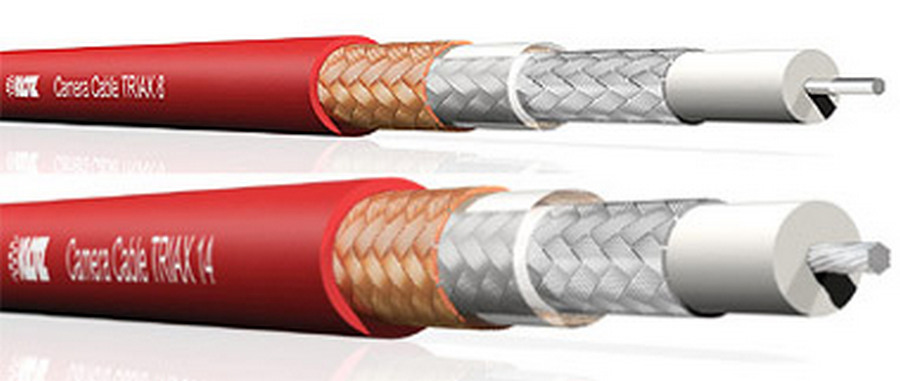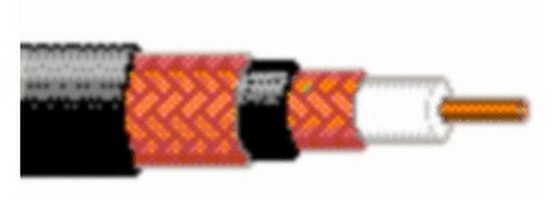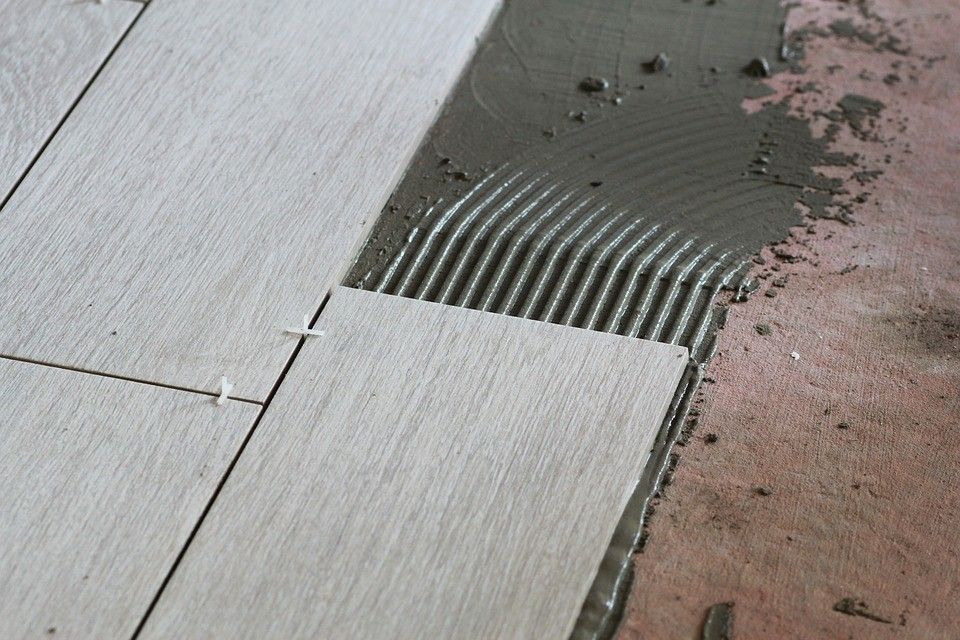Ranking of the best triaxial cables for 2025

A triaxial cable (aka triax or triaxial) is a type of electrical cable that is somewhat similar to coaxial, but differs from the latter by the presence of a third insulating layer and a second shielding conductor. Triax is able to provide a wider signal transmission along with high noise immunity, but its price is higher. Such wires have found their application in television broadcasting, where they are used to connect professional control panels and studio video cameras.

Content [Hide]
- 1 Purpose of TRIAKS systems and general information about them
- 2 Principle of operation
- 3 Design, technical qualities and applications
- 4 Recommendations for safe operation
- 5 Modern types of triaxial cables
- 6 Ranking of the best triaxial cables for 2025
- 7 Conclusion
Purpose of TRIAKS systems and general information about them
At facilities intended for continuous television broadcasting and the work of cameramen (for example, stadiums and concert halls), triax networks for certain filming points can be immediately included in the construction project. Also, on their basis, local provision of receiving / transmitting a TV signal in mobile TV stations is tied. Such solutions greatly simplify the work of TV studio employees, because there is no need to re-lay and clean up the wires every time.
Among other things, this type of consumables can be used for precision measurements of low-current signals. This direction of use has become possible because the potential of both the inner screen and the central conductor is constantly kept at the same level, and this nullifies all leakage and attenuation, even if there are defects in the insulation (for example, holes). From this it is clear that electric current leaks can occur both on the internal and on the external circuit, but this will not affect the passage of the signal along the central core, which leads to the test object.Triaxial cables are easy to use with a variety of home distribution devices that need to combine/separate a variety of signals and transmit them through cables to different receivers (a prime example is the central control panel of a smart home system, from floor heating command to intercom communication).
Today's use of triaxes in television broadcasting
With the current TV technology greatly increasing the demand for picture quality (Ultra High Definition TV), using High Frame Rate (HFR) and using High Dynamic Range (HDR), the use of triaxial cables specifically for the TV industry has begun to shrink. The cables in question have been replaced by fiber optic single-mode and copper power wires, which have a higher degree of resistance to external radio interference, which is achieved due to better optical isolation, coupled with increased bandwidth. However, the complete replacement of triaxes will not happen soon, only because it will be necessary to completely shift many kilometers of existing fields for large studio facilities. And for "smart home" systems, they still remain the best solution in terms of the combination of price and quality.
Principle of operation
In this type of consumables, the central core is designed to transmit information and voltage, and the inner screen is responsible for grounding. Due to the ability to separate channels, the cable allows the camera to:
- Transmit analog-digital audio and video information (including high quality standards);
- Obey commands transmitted from the remote control (for example, changing exposure settings);
- Provide live broadcasting;
- Get power.
Among other things, a triaxial cable allows a professional camera to properly form a video signal in the desired resolution by correctly adding an RGB image (from red, blue and green colors). For this, the colors are added linearly, forming a single luminance signal, which is used only for accelerated transmission, and which, upon arrival at the final receiver, is “decomposed” back into three basic colors. With the help of such a "combined" transmission technology, it is possible to reduce the loss in the transmission of colors, rather than each color being transmitted one by one.
Design, technical qualities and applications
The triaxial system uses a triple coaxial design - it has a wire protected by two concentric screens. Professionals quite allow to consider a three-axis cable as the same coaxial cable, but with additional protection and functional options. It is they who add the necessary practical shielding qualities that reduce losses during data transmission. Triaxes are more suitable for use where it is necessary to transmit both low and high frequencies over the network at the same time, despite the fact that the network is laid in fields with a high level of electromagnetic "pollution" (for example, in the immediate vicinity of a pile of electrical appliances, which abounds in the same television studio ).

These triaxial consumables can be made with a stranded or solid center wire protected by a double shield. It should be noted that the external screen, in addition to the protective function, can also carry the functions of transmitting individual multiplexing signals.Such a structure of the common line assumes that it is not necessary to separately lay a special line to the receiver to transmit the text of the teleprompter, issue commands to separate equipment, and even simple backup power.
It is for television that two basic versions of triax wires are more often used:
- RG59 - 3/8 inch;
- RG11 - ½ inch.
Both of them can transmit a picture without loss of quality over a distance of up to half a kilometer, only the first one, due to its thickness, is also capable of transmitting high-quality sound.
And for the second, the audio quality leaves much to be desired, but such a signal is quite suitable for establishing an internal working connection such as “intercom”.
The cable systems under consideration can be:
- Analog triaxes - designed to broadcast component video, low-quality audio, ensure the operation of the intercom service or transmit control commands. All of them are modulated at FM frequencies and are transmitted in the same direction.
- Digital Triaxes - These are used for transferring component digital video.
Triax was an advanced system for its time, expensive and complex, made on the basis of high-quality materials, having a balanced and high-precision design, providing the highest quality wired transmission of information, which was characterized by low signal attenuation along with an extremely uniform distribution of resistance. All of the above properties were achieved by a very smooth outer braid with a certain level of shielding.
If we talk about component digital networks formed on three-axis cables, then the digital video transmitted in them is of sufficient quality and can reach a delivery speed of up to 300 megabits per second. Such speeds are absolutely not required in home video systems, so triax is an exclusively professional technology. The main areas of use for triaxial wires are any places from where there are large television broadcasts with the participation of many professional video cameras (concerts, sports events, long live studio broadcasts).
A standard triaxial system includes the following parts:
- Professional video camera;
- Special adapter unit (CAU) - it is located on the back of the video camera and connects the cable to the equipment;
- Control unit (CCU) - it is located remotely in a special control room (director's cabin) and is responsible for transmitting power, commands and sending / receiving video and audio;
- The triax cable itself - it is located between the two above blocks and provides communication between them. It is also responsible for maintaining AC power.
Recommendations for safe operation
Due to the fact that a triaxial cable can reach an extraordinary length, calculated in hundreds of meters, it must simultaneously be able to transmit significant accompanying powers (in addition to the video signal, there may be electric power and "intercom"). Accordingly, the voltage supplied through it can be in the range from 160 V DC to 250 V AC. Such values are simply necessary to cover long distances, despite the fact that the resistance per kilometer will be from 5 to 30 ohms.From this it is clear that the wire simply cannot work fully without the support of special high voltage adapters. Such adapters must be installed in source cameras without fail, have a minimum rating of 12 V DC, and have various switchable operating modes.
At the same time, high voltage passing through the cable requires special precautions. They must also be taken into account in order to control current leakage to earth and to prevent electric shock to personnel in the vicinity, which may result from accidental insulation failure. Unlike coax, triax is strictly forbidden to be connected/disconnected to/from the equipment included in the network. Also, it is forbidden to touch the places of critical folds on the wires, because they are places of potential danger of electric current breakthrough. The best triaxial network should always include at least one fully copper-clad cable.
Modern types of triaxial cables
The current market can offer several basic models that will differ in the size of the cross-sectional diameter. As mentioned above, a larger cable diameter generally means a larger core diameter, which improves transmission range. The most common sizes are (in millimeters):
- 8,5;
- 11;
- 14.
As a rule, during the construction of sports facilities, the conditions for the triaxial network placement structure are immediately laid down in the project, for which wiring with a diameter of 14 millimeters is selected. A diameter of 11 millimeters is suitable for the deployment of mobile TV studios, where the need for distance is limited to a hundred or two meters.The 8.5 mm wire is considered the exclusive prerogative of stationary television studios, it is adapted for installation in conditions of a constantly bending laying path, and therefore it is produced with improved bending properties.
As for the manufacturers of triax systems, the following have gained great popularity in Russia:
- Fisher Connectors (Switzerland);
- "Canare" (Japan);
- LEMO (Switzerland);
- Huber-Suhner (Switzerland);
- "Belden" (USA);
- "Drakka" (Netherlands).
It should be noted that Russian manufacturers are not engaged in the production of such products, therefore, only foreign samples are present on the domestic market. Fisher Connectors' 1051 series, Lemo's 4m series, and Canare's CFTX series are very popular with our professional users. They are extremely easy to install and work fairly well with non-specialized crimping tools. Also, they are ideal for organizing switching fields inside theaters, studios, outdoor stadiums, as well as for the implementation of mobile TV studio complexes for outdoor events.
Ranking of the best triaxial cables for 2025
Budget segment
3rd place: "HUBER-SUHNER G02332 / RG174, 4.25mm, 50ohm, 100m"
votes 0
The sample is intended for the implementation of the switching field in small studios. It has sufficient thickness and provides an excellent level of impedance to prevent signal attenuation. It will also be an excellent solution for the equipment of a traveling television studio, when the camera distance will not exceed 100 meters. The recommended cost for retail chains is 325 rubles.

- Good bending performance;
- Adequate price;
- Quality performance.
- Not detected.
2nd place: "HUBER-SUHNER RG108 / RG108A/U, 6mm, 78ohm, 200m"
votes 0
Another representative that can be used in a stationary television studio. It has high (for its purpose) indicators of wave resistance and a greater section thickness. It transmits control commands perfectly and is able to withstand the conditions of work with most control adapters (when appropriate connectors are installed). The maximum laying length is up to 200 meters. The recommended cost for retail chains is 350 rubles.

- Focus on stationary studio use;
- Ability to work with various models of adapters;
- Increased pad length.
- Not detected.
1st Place: "BELDEN RG58A, Double Braid, RG58A, 20 AWG, 7 x 0.32mm, 50 Ohm"
votes 0
An extremely popular and common model with a double braid, which indicates an increased degree of security. This camera touring cable is suitable for professional use at outdoor concert venues, for organizing broadcasts of sporting events, connecting mobile studios to OB vans. Specially designed for mobile applications, it has a heavy-duty PUR-a-Flex polyurethane shell, which means high resistance to abrasion and aggressive environments. The recommended cost for retail chains is 410 rubles.

- Polyurethane shell;
- Dual screen;
- Fischer (Switzerland) connectors of the "1051 9+" series, designed in accordance with the special requirements for HDTV signal transmission;
- Protective caps of connectors that preserve the contact group.
- Not detected.
Middle price segment
3rd place: "Canare L-5CFTX"
votes 0
This installation consumable for HDTV-SDI analog and digital video signals, type (TRIAX 8). Structure: 1.0/4.8/6.4 (1x1.0 mm), AWG 19 copper core in the middle, (IP) + (PE) standard conductor dielectric, double-layer screen made of woven copper with composition (95%+95%), operating temperature: from -30°C to +75°C, external diameter - 8.8 mm, impedance - 75 Ohm. The recommended cost for retail chains is 579 rubles.

- Fully copper core;
- Screen in two layers;
- Thick outside diameter.
- Not detected.
2nd place: DRAKA TRIFLEX 11 1.4 LS/6.6 S
votes 0
This elastic wire is designed to transmit analog and digital video signals HDTV-SDI, type - TRIAX 11, structure - 1.4 / 6.5 / 8.6 (1x20 * 0.3 mm), conductor - twisted / silver-plated copper, AWG 16, conductor dielectric: (FPE) + (TPE), double-layer screen - woven silver-plated copper + woven copper (75% + 75%), operating temperature: -40°C to +70°C, cable diameter 10.9 mm, characteristic impedance - 75 ohms. The recommended cost for retail chains is 647 rubles.

- Elastic construction;
- Silver plated copper in structure;
- Wide operating temperature range.
- Not detected.
1st place: "Canare L-7CFTX"
votes 0
This installation consumable is intended for the formation of analog / digital fields in HDTV-SDI video signals, type (TRIAX 11), structure: 1.4/6.5/8.7 (1x1.4 mm), central conductor - copper, AWG 16, conductor dielectric (IP) + (PE), two-layer screen - braided copper (88% + 88%), operating temperature: -30°C to +75°C, outer diameter 11.0 mm, characteristic impedance - 75 ohms. The recommended cost for retail chains is 852 rubles.

- The central core is solid copper;
- Sufficient thickness;
- Adequate price.
- Not detected.
Premium class
3rd place: Belden 8233
votes 0
The wire is intended for analog/digital fields working with HDTV-SDI video signal, type (RG11/U), structure - 1.63/7.3/9.3 (1x1.63 mm), copper core in the core, AWG 14, conductor dielectric - (FHDPE) + (PE), two-layer braided screen made of copper (95% + 80%), operating temperature: -30°C to +70°C, outer diameter 12.07 mm, characteristic impedance - 75 ohms. The recommended cost for retail chains is 1442 rubles.

- Super reliable dielectric;
- Double layer braid;
- Work over long distances.
- Not detected.
2nd place: Belden 1858A
votes 0
The model is designed to create large communication fields for conducting an analog / digital video signal, connector type (RG11 / U), structure: 1.63 / 7.92 / 9.93 (1x19 * 0.36 mm), stranded copper, AWG 15, conductor dielectric (FHDPE) + (PE ), two-layer braided copper screen (95% + 95%), outer diameter - 13.21 mm, operating temperature: from -35°C to +75°C, outer jacket PVC (Belflex®), characteristic impedance - 75 Ohm. Recommended price for retail chains - 2442 rubles

- Improved protective shell, made according to a special system;
- Double-layer braided copper screen;
- Common connector type.
- Somewhat overpriced.
1st place: "MrCable BERMUDDA F08 PVC RED"
votes 0
This touring, elastic wire works in HDTV-SDI signals, type (TRIAX 8), structure: 1.0 / 4.5 / 6.6 (1x12 * 0.24 mm), conductor - twisted / silver-plated copper, conductor dielectric - 1 foamed polyethylene (FPE) + 2 thermoplastic elastomer (TPE), AWG 19, two-layer shield - braided silver-plated copper + braided copper (75% + 75%), operating temperature: -40°C to +80°C, outer diameter 8.4 mm, characteristic impedance - 75 ohm. The recommended cost for retail chains is 3100 rubles.

- Increased protection against heating;
- Screening in two layers;
- The central vein is silver-plated.
- Overcharge.
Conclusion
Triax is still the most popular type of cable for connecting professional cameras to the network and control devices. They use frequency division multiplexing, transmit video and audio signals to the central control unit, while receiving control commands from it, such as iris adjustment, reverse video, signal data and intercom. Power is also carried over a triaxial cable with a potential difference between two of the three conductors, which will depend on the type of connection.
new entries
Categories
Useful
Popular Articles
-

Top ranking of the best and cheapest scooters up to 50cc in 2025
Views: 131649 -

Rating of the best soundproofing materials for an apartment in 2025
Views: 127688 -

Rating of cheap analogues of expensive medicines for flu and colds for 2025
Views: 124517 -

The best men's sneakers in 2025
Views: 124031 -

The Best Complex Vitamins in 2025
Views: 121937 -

Top ranking of the best smartwatches 2025 - price-quality ratio
Views: 114978 -

The best paint for gray hair - top rating 2025
Views: 113393 -

Ranking of the best wood paints for interior work in 2025
Views: 110318 -

Rating of the best spinning reels in 2025
Views: 105327 -

Ranking of the best sex dolls for men for 2025
Views: 104363 -

Ranking of the best action cameras from China in 2025
Views: 102214 -

The most effective calcium preparations for adults and children in 2025
Views: 102010









